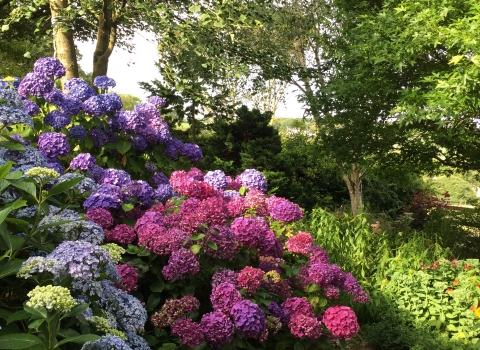We were incredibly excited to announce our first ever garden safari, thanks to the members of Kea Garden Society. A selection of gardens were due to open on the 5th July to raise money for Cornwall Wildlife Trust as part of our annual Open Gardens series but due to coronavirus, has been unable to do so.
In this week's blog, we ask some of the garden owners "How have you used your garden in lockdown? Has it helped and, if so, how?" and organiser, Sue, discusses her garden in bloom.

